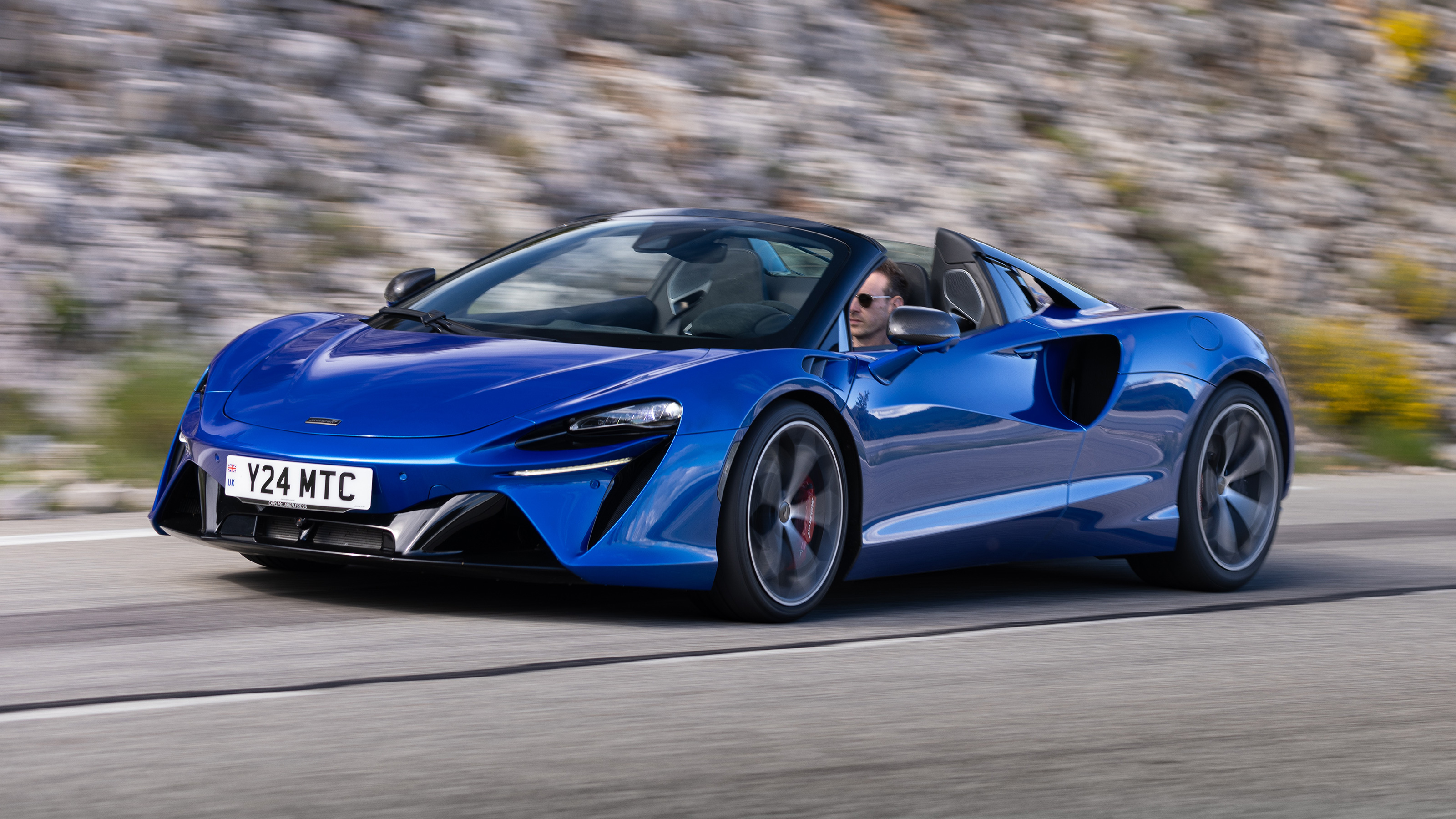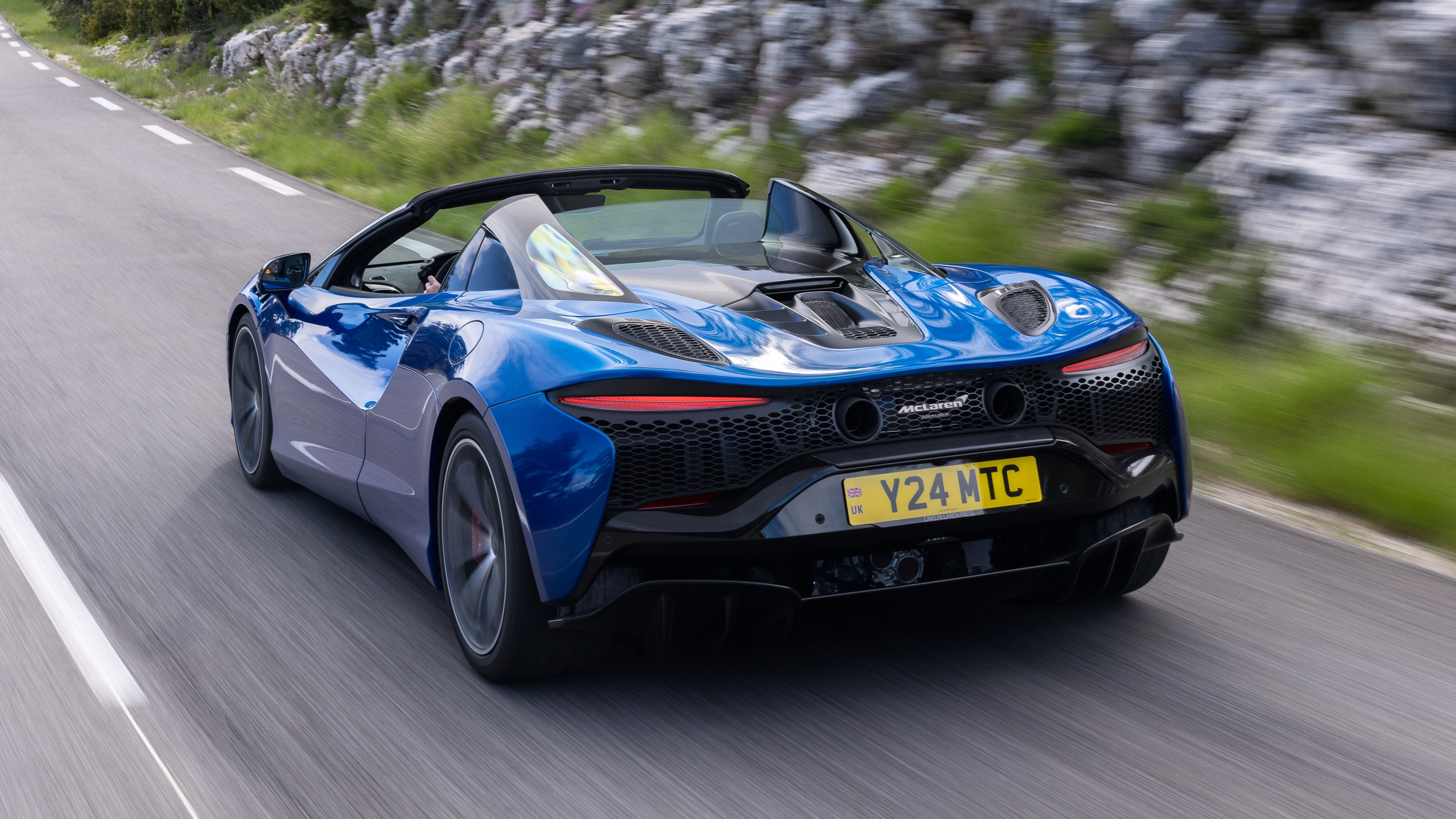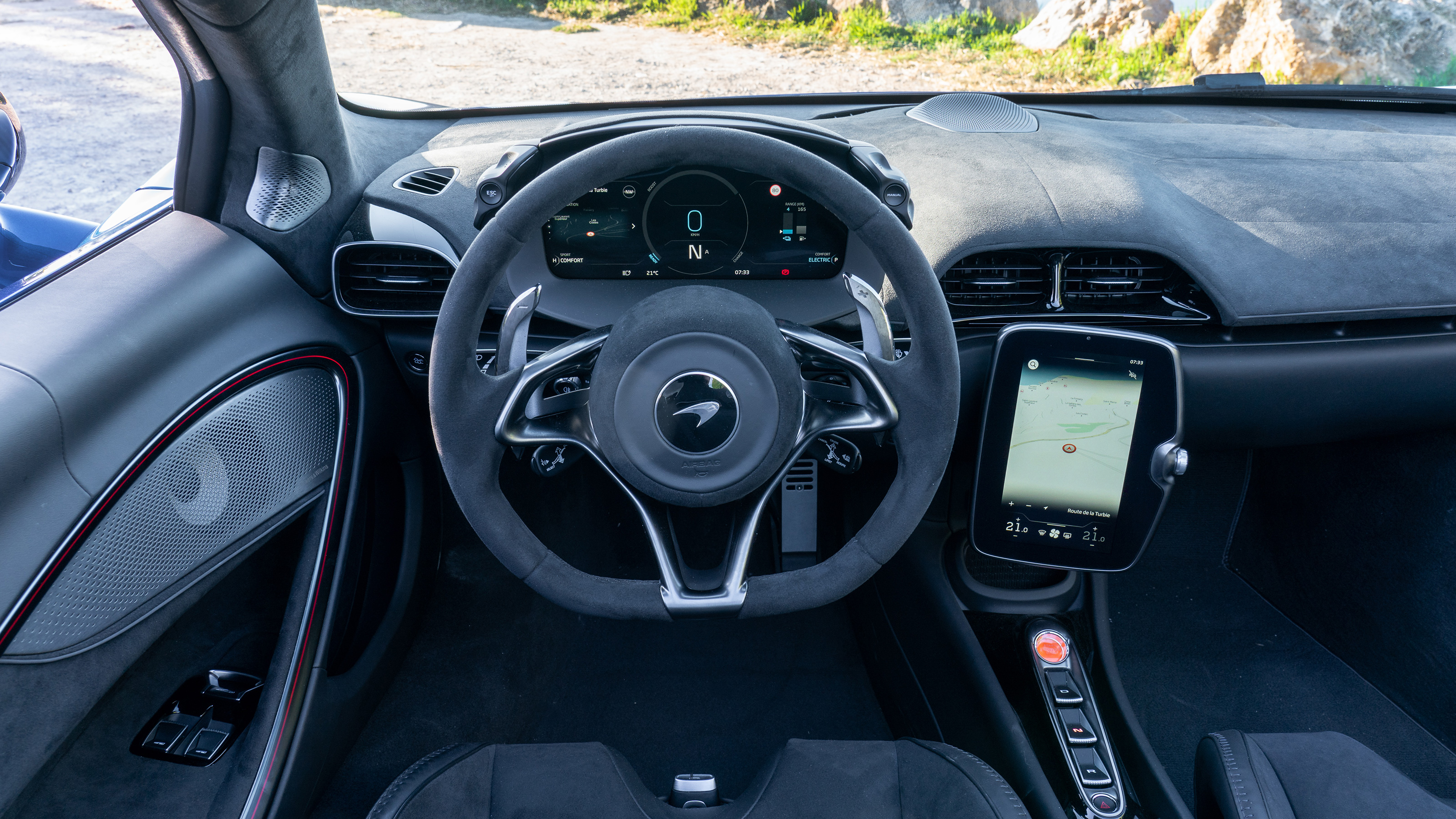
Driving
What is it like to drive?
If the Artura resembles the Ferrari 296 GTB in many areas, McLaren’s insistence on a carbon composite monocoque is the key area of differentiation. Called the McLaren Carbon Lightweight Architecture (MCLA for short, thankfully), it enhances structural rigidity, lateral bending stiffness (also important, overlooked unless you’re a chassis boffin), and reduces weight.
That last part of the equation is the area that McLaren is most wedded to, and it’s also the reason the company is not wading into the pure EV market any time soon. The technology is just not compatible with the company’s ethos, it says. Not yet, anyway.
Drive the Artura Spider and you’ll swiftly appreciate the wisdom of this. Incorporating the hybrid apparatus into a car like this and getting to 1,457kg (dry) is very impressive. The Spider is 62kg heavier than the coupe but you’d need to hardwire your nervous system into the car’s to detect any meaningful difference. Almost all of those extra kilos are in the retractable hard top and its mechanisms, and none of them affect the Artura’s appetite for corners.
Which is considerable, and persuasive. Few cars in our experience are so fluid, balanced and rewarding in every phase: entry, apex and exit. McLaren is an electric steering refusenik, and the Artura Spider’s old-fashioned hydraulic rack remains sensational. Its set-up is almost identical to the 600 LT’s, we’re told, which gives you some idea of how good it is.
Changes to the car’s damping – the controllers have a faster processing speed – and the new engine mounts increase the impression that the car is pivoting around the driver. Also helpful here is the Artura’s (relatively) compact size, the driving position, and the excellent forward visibility.
Everything is in phase: whatever you ask of it, the car has you covered. Arrive late and at an enthusiastic velocity into a corner, and you’ll only need to make one measured steering input rather than having to dial in a bit more midway round. There is feel, linearity, and granularity. You could write a thesis on McLaren’s prowess when it comes to steering feel; no doubt some of their engineers have.
The Artura Spider is equally adept through the second- and third-gear corners that are carved into the cliff-faces of our French test route as it is on the much faster fifth-gear sweepers we find higher up. You can alter the car’s dynamism across Comfort, Sport and Track settings via a rocker control on the side of the instrument binnacle. We left it in Comfort most of the time, finding Sport a little jiggly even on smooth surfaces. Nor did we feel the need to switch out the stability control, although we know the drift control works pretty well in the right circumstances. Track is self-explanatory, though it’s worth noting that the regen will keep the battery at 40 per cent in this mode.
So the default set-up is the best?
Happily so, and the presence of mechanical anti-roll bars (as opposed to the 750S’s hydraulically cross-linked configuration) doesn’t detract from a handling and ride balance that’s very well sorted. An electronically controlled e-diff helps amplify the impression of accuracy and adjustability, and in the dry at least the sense of fluidity and flow is unimpeachable.
A note on the tyres: Pirelli’s P Zero is the standard fitment tyre, but our test car was shod on the optional Corsa rubber. No doubt things would be slightly less fun on a slimy British B-road in mid-December.
What’s the story with the gearbox?
The Spider and other Artura v2.0s also get a revised transmission. The eight-speed ’box has a new pre-fill feature that pressurises the hydraulic fluid in the system with even greater accuracy; by taking the open clutch closer to the engaged one, it improves shift times by 25 per cent. The shift action itself on the column-mounted paddles has just the right amount of resistance and weight.
There are four powertrain modes: Comfort, Sport, Track and Electric. Comfort combines electric and hybrid in everyday use; Sport and Track use the electric motor for better low-end response and torque in-fill, eliminating lag almost completely. The Artura Spider’s additional power is best appreciated from 4,000rpm to the 8,500rpm redline, although the peak torque remains unchanged at 531lb ft.
The optional sports exhaust features a symposer that amplifies the engine’s sound waves into the cabin via a module sandwiched between the seats. The result is an Artura that’s fruitier than before, but still… some way off a Lamborghini Huracán. Well, a more nuanced supercar experience is no bad thing. That said, McLaren’s lesser-spotted hooligan side is visible in the new ‘spinning wheel pull-away’ function which uses the ‘ESC off’ mode to deliver full-fat smokey burn-outs.
The brakes are terrific, and another area in which the company refuses to compromise. There’s no regen here, just precise calibration, fantastic feedback, and more feel than we noted on our first encounter with the Artura. They’re 390mm six -pot jobs at the front, 380mm at the rear, made of carbon ceramic. McLaren has revised the ABS calibration for improved braking distances, and revised ducts improve cooling and reduce drag.
That’s for track use, really, which may also be the best venue in which to fully appreciate the Spider’s performance. It’ll do 62mph in 3.0 seconds, takes 8.4 seconds to hit 124mph (that’s a tenth slower than the coupe), and 186mph in 21.6s. Top speed is 205mph. So it’s plenty fast, though it’s a different sort of fast to the ballistic 750S. Which, as one McLaren engineer pointed out, is technically an old-school supercar now.
Featured

Trending this week
- Car Review
BMW iX3






